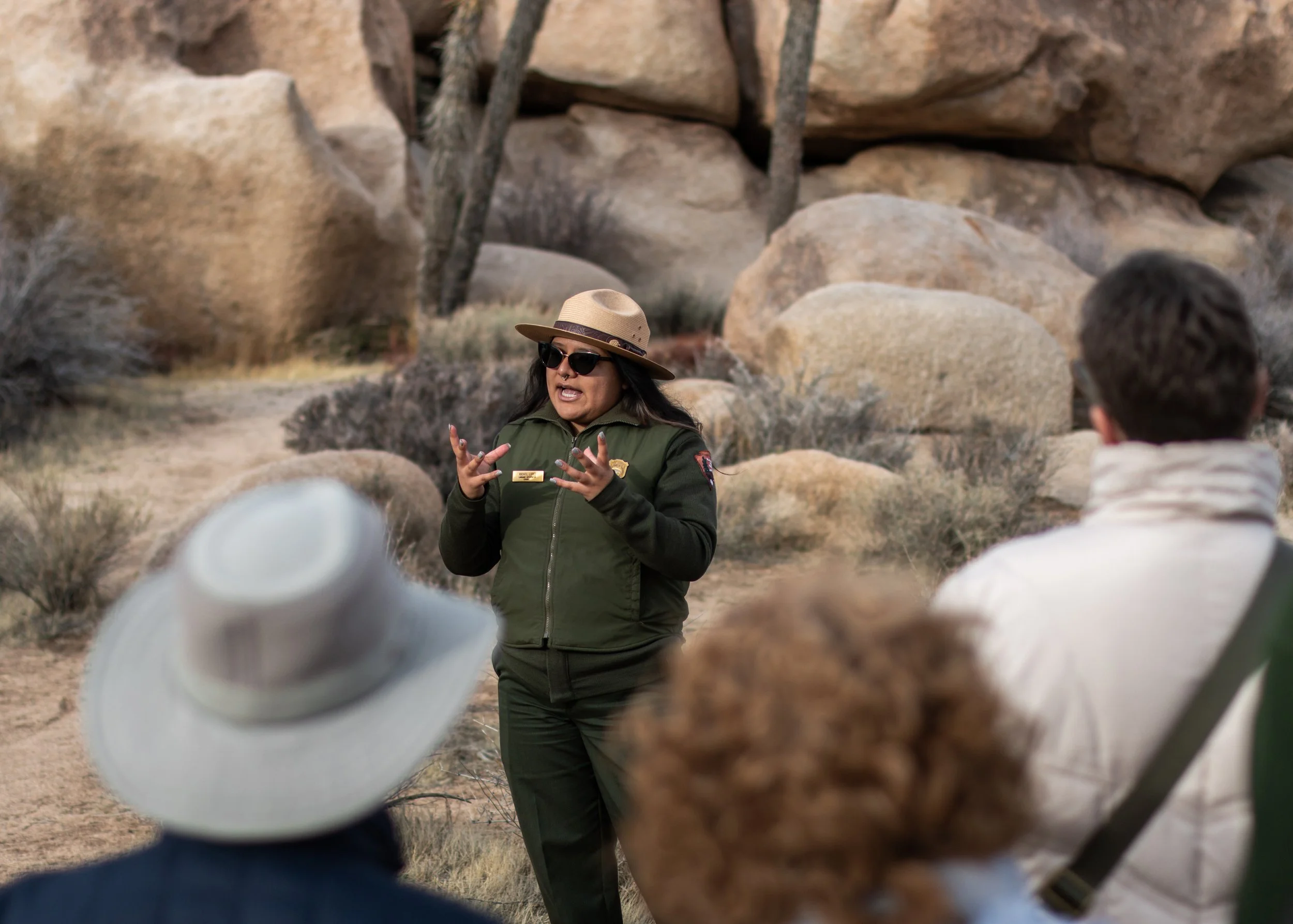First-Time Visitor Guide to Joshua Tree National Park
Visiting Joshua Tree National Park for the first time is an unforgettable experience—one that immerses you in a landscape where rugged rock formations, vast desert plains, and the iconic Joshua trees come together under some of the darkest night skies in the country. But to truly make the most of your trip, a bit of planning goes a long way.
Whether you're here to hike through hidden oases, climb world-famous boulders, camp beneath a canopy of stars, or simply take in the quiet solitude of the high desert, this guide will help you navigate the essentials. From when to visit and what to bring to insider tips on avoiding crowds and staying safe, here’s everything you need to know for a smooth, enjoyable, and awe-inspiring adventure in Joshua Tree.
Planning Your Visit: Key Things to Know
Entrance Fees and Pass Options
A park pass is required for all visitors, which can be purchased at park entrances or online.
Consider buying an Annual Pass if you plan to visit other national parks.
For fee details and entrance options, visit the official park pass page.
When to Visit Joshua Tree
Fall, Winter, and Spring are the most popular seasons due to cooler temperatures.
Summers can be extremely hot (often exceeding 100°F/38°C), limiting outdoor activities.
Check weather conditions ahead of time, and bring layers for chilly nights, as desert temperatures can drop sharply.
Navigating the Park and Visitor Centers
Joshua Tree is vast, covering over 790,000 acres, with several entry points:
Joshua Tree Visitor Center (near the town)
Oasis Visitor Center (29 Palms)
Black Rock Nature Center (Yucca Valley)
Grab a park map or use the NPS app (available for download) to help you navigate the park's trails and roads, especially since cell service is limited in many areas.
What to Bring for Your Trip
Water: There are no reliable water sources within the park, so bring at least one gallon per person per day.
Sun Protection: Hats, sunscreen, and sunglasses are essential to protect against the sun's intense rays.
Comfortable Shoes: If you plan to hike, sturdy hiking boots or trail shoes are recommended.
Snacks and Food: There are no restaurants inside the park, so pack snacks or a picnic lunch.
Top Things to Do in Joshua Tree National Park
Hiking Trails for Every Skill Level
Hidden Valley Nature Trail (1 mile): Easy and family-friendly, showcasing iconic boulders and desert plants.
Ryan Mountain Trail (3 miles): A more challenging hike with panoramic views of the park.
Barker Dam Trail (1.1 miles): Offers a mix of history and wildlife spotting opportunities.
Climbing and Bouldering
The park is a world-renowned destination for rock climbing and bouldering, with more than 8,000 climbing routes. Make sure to bring proper gear and check for climbing conditions.
Stargazing and Night Sky Viewing
With minimal light pollution, Joshua Tree is ideal for stargazing.
Visit Cottonwood or Jumbo Rocks Campgrounds for some of the best night-sky views. Bring a star map or download a stargazing app to identify constellations.
Safety Tips for a First-Time Visit
Stay on Marked Trails
It’s easy to get disoriented in the desert, so stick to marked trails and pathways.
Avoid off-trail hiking to protect the fragile desert ecosystem.
Prepare for Limited Cell Service
Cell phone coverage is limited throughout most of the park. Make sure someone knows your itinerary and expected return time.
Respect Wildlife and Park Rules
Keep a respectful distance from wildlife, such as snakes and desert tortoises.
Pets are allowed only in campgrounds and on paved areas but not on trails.
Watch the Weather
Sudden weather changes, such as high winds or flash floods, can occur, so check the weather forecast before your visit.
Camping and Overnight Stays
Reserve a Campsite in Advance: Popular campgrounds, such as Jumbo Rocks, Black Rock, and Hidden Valley, fill up quickly during peak seasons.
Plan for No Water: Most campgrounds in the park do not have water, so be sure to bring enough.
Leave No Trace: Follow Leave No Trace principles by packing out all trash and keeping the park clean for future visitors.
Conclusion
A first visit to Joshua Tree National Park can be a life-changing experience. Whether you're interested in hiking, camping, photography, or simply exploring the desert, this guide will help you prepare for a smooth and enjoyable trip. Remember to plan ahead, respect the park's rules, and be mindful of safety to make the most of your adventure.
For more detailed information and updates, visit the official First-Time Visitors Page on the NPS website.










